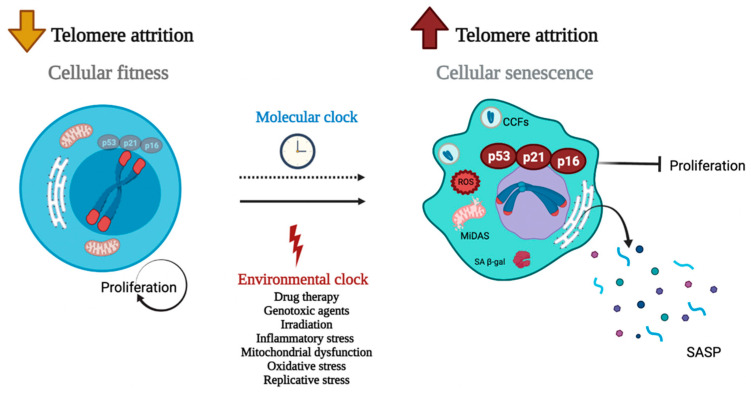Figure 1.
Telomere dysfunction regulates cellular senescence. All somatic cells have a molecular clock that leads them to develop a senescence phenotype (dotted line). This process leads to a gradual and controlled loss of telomeres so that under stimulation, cells can respond appropriately (cell fitness). However, this process can be accelerated (solid line) under environmental clock conditions given by drug therapy, genotoxic stress, irradiation, inflammatory stress, mitochondrial dysfunction, oxidative stress, or replicative stress. The environmental clock is associated with an accelerated rate of telomere decay, leading cells to acquire senescence-associated secretory phenotype (SASP). Some cellular markers of the cellular senescence process are mitochondrial dysfunction-associated senescence (MiDAS), cytoplasmic chromatin fragments (CCFs), B-galactosidase production, and regulatory factors such as p53, p21, and p16. During the last years, the SASP profile given by the uncontrolled secretion of cytokines such as IL-6, IL-8, TNF, IFN has been studied to classify and identify cells in senescence induced by telomere attrition.

